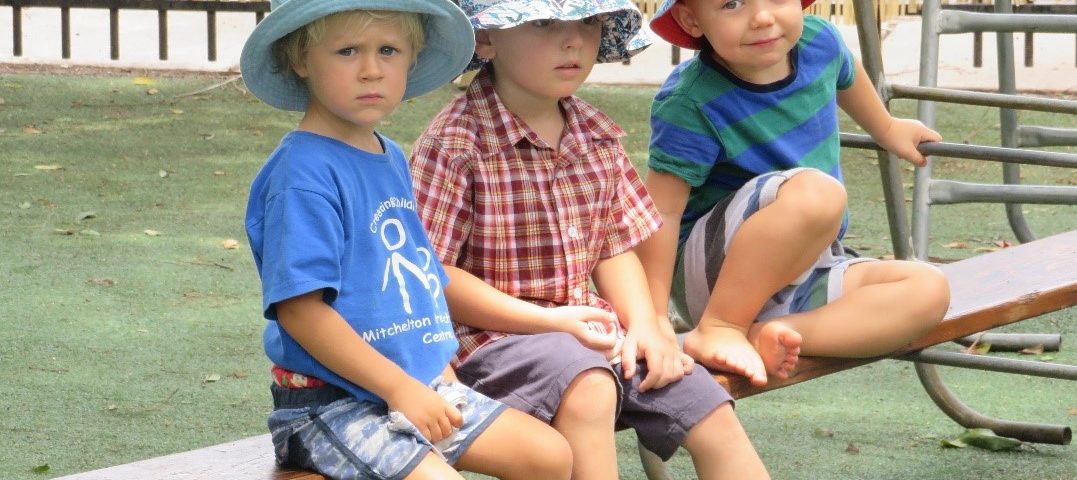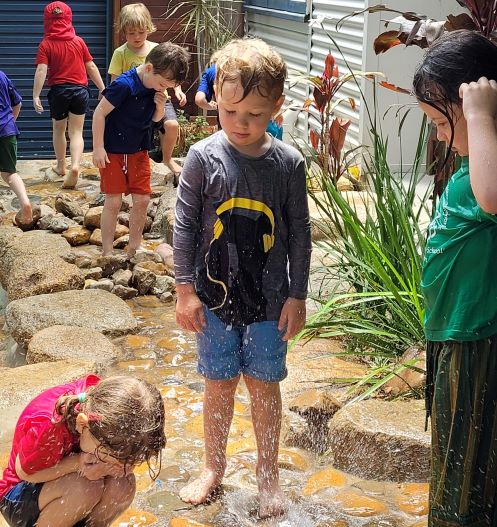
Why read to Children…
September 12, 2018
Sleep and Rest at Kindy….
February 27, 2019Parents and children separating and saying good-bye is a two-way street involving bravery for all involved. For some families it can be very straightforward while for others it is fraught with challenges. It is very normal for children to feel big emotions, particularly if they haven’t had too much experience with saying good-bye to you.
Time and practice often eases this process as the teaching teams support individual children (and parents) to move from moments of sadness to feelings of calm and/or excitement. Sometimes it is unpredictable. One parent, who was super prepared for big tears, said goodbye and walked out in amazement saying “well that was a fizzer!”
If, however, you’ve said good-bye and your child is struggling to pull away from their teacher to get to you, ensure you keep walking, keeping your tears until you are out of sight of your child. There are always boxes of tissues in the central foyer!
Some parents may feel like tiptoeing out without saying good-bye however this can damage your child’s trust in you. It is important for children to know that you are going. Saying a quick “good-bye, see you this afternoon”, gives a clear indication to your child that you are going and will be back. Sometimes the anticipation of saying good-bye is worse than the actual moment which is why, for some children, it is better to go quickly and not prolong the process. Each child is an individual who has unique qualities, family backgrounds, personality traits and responses to new situations. It is important to talk with your child’s teacher to work out ways to support the separation process. If children cry as parents leave, most will stop crying within minutes. Rest assured, however, that your child’s teacher will contact you if the crying becomes too distressed and you can work out a plan together.
Saying good-bye, being sad and recovering build resilience. They will know that they can feel big emotions and find ways to manage. Given time children will discover that they can cope with life’s challenges. It is also a great reference point for future times of separation. “Remember when you felt sad when you first started kindy, you had to be brave, take a breath and get on with the day. You calmed yourself really well then played and discovered all sorts of great things.”
Remember that:
- Building a circle of trust, sense of security and a sense of belonging can take time between children, parents and teaching teams.
- Developing predictable routines about saying goodbye when Kindy starts promotes a sense of trust and security for the child.
- It takes time to establish routines. Remember to smile if transitions don’t go as planned. Being flexible is also helpful in avoiding escalating stressful reactions.
- It is normal for both the parent and child to have varying feelings about separating for the day. The bond is a very deep and young children need time to understand that Mum and or Dad are returning at the end of the kindy day.
- Being consistently calm gives your child the message that you trust that he/she will be safe in the new environment or if returning for another year.
Tips!
- Establishing routines at home prior to kindy also builds a sense of security, plan with your child/family about ways to prepare for the mornings. Allow plenty of time. You may like to pack and refrigerate a nutritious lunch box the night before.
- Talk to your child’s teacher about ways to say goodbye to your child if you are having difficulty. They are there to support both of you and to create a shared experience.
- Spend time talking about an aspect of your child’s day and share something about yours. This establishes communication links and an understanding that you have routines in your day too.
- Explain that new things, places and people often even make mummy and daddy feel those same feelings of being a bit sad/worried.
- These patterns of establishing and adjusting to new beginnings can be the foundation for life -long learning. It is a step by step process that takes practice.
- Send along a family photo, father’s hanky, cuddly toy.
- Have a reason to come back – borrow the photo book or take home the washers to have to come back to kindy to return the next day/week.
- Establish rituals “After the puzzle, it’s time for me to go. We can have a hug, a kiss through the gate and a wave.”
- Be careful to use practical words about kindy. Being happy all day is an unrealistic expectation. Some parts of adjusting to kindy may be challenging and ‘not fun’. “I noticed that you sat with some other children today.” “I read that the story was about ____. You like _____.” “You did some great calm breathing as I left you today. I bet that helped you to calm down and work out what to do at kindy.” Sometimes it is best not to talk about kindy at all!
- Create together an imaginary protector for when they are away from you.
- Read the story The Invisible String and keep in their bag a piece of string.
- Teach your child how to take some calming breaths to breath out the butterflies in their tummy.
- Help your child to self-calm by practicing round the garden while making circles in their hand, just like you do at home. Music and touch trigger feel-good hormones and empowers them as they can take some action.
- Let your child know that it ‘makes your day’ when he/she can say good-bye with a smile!
Leanne Hunter and Madonna Corboy





